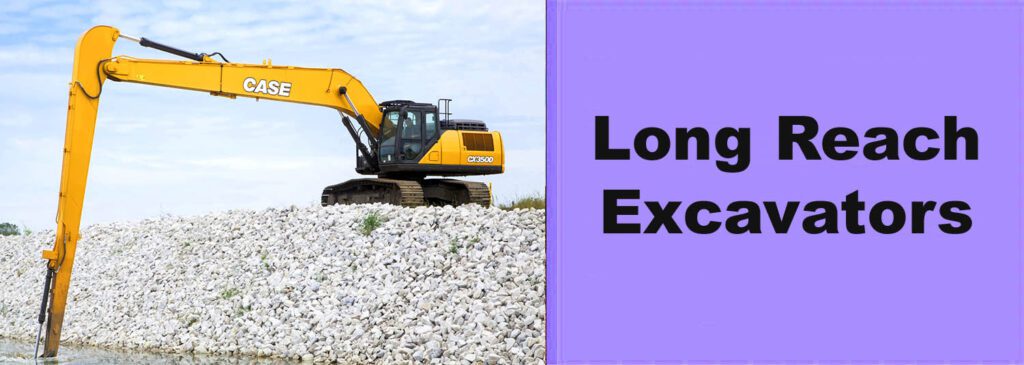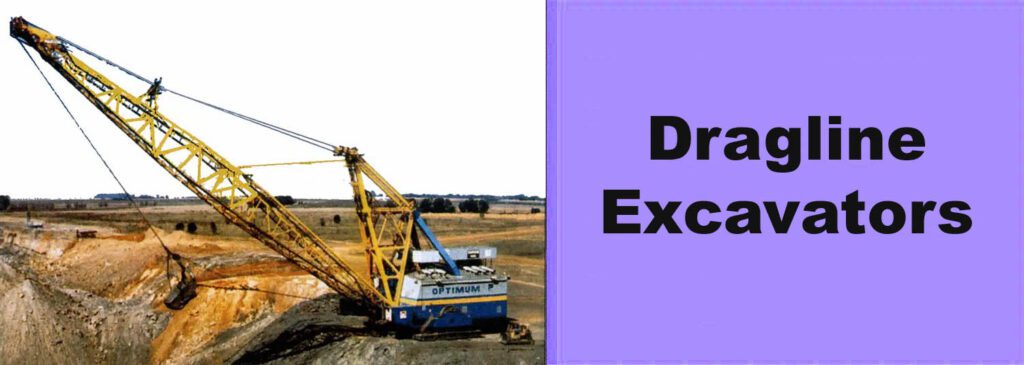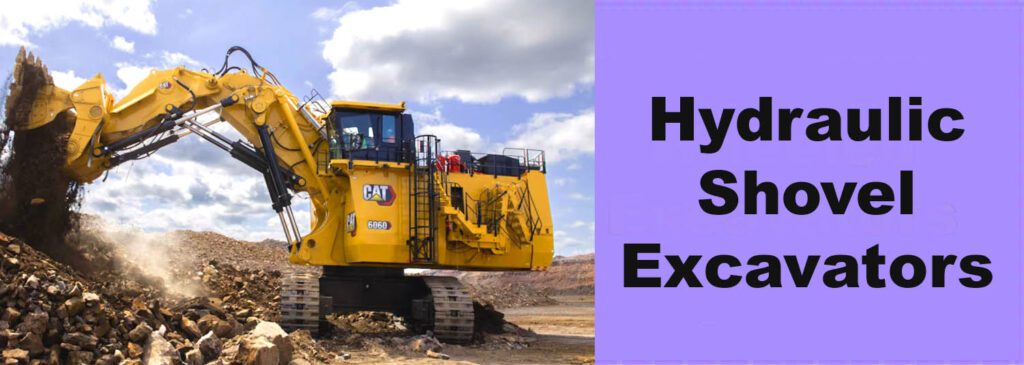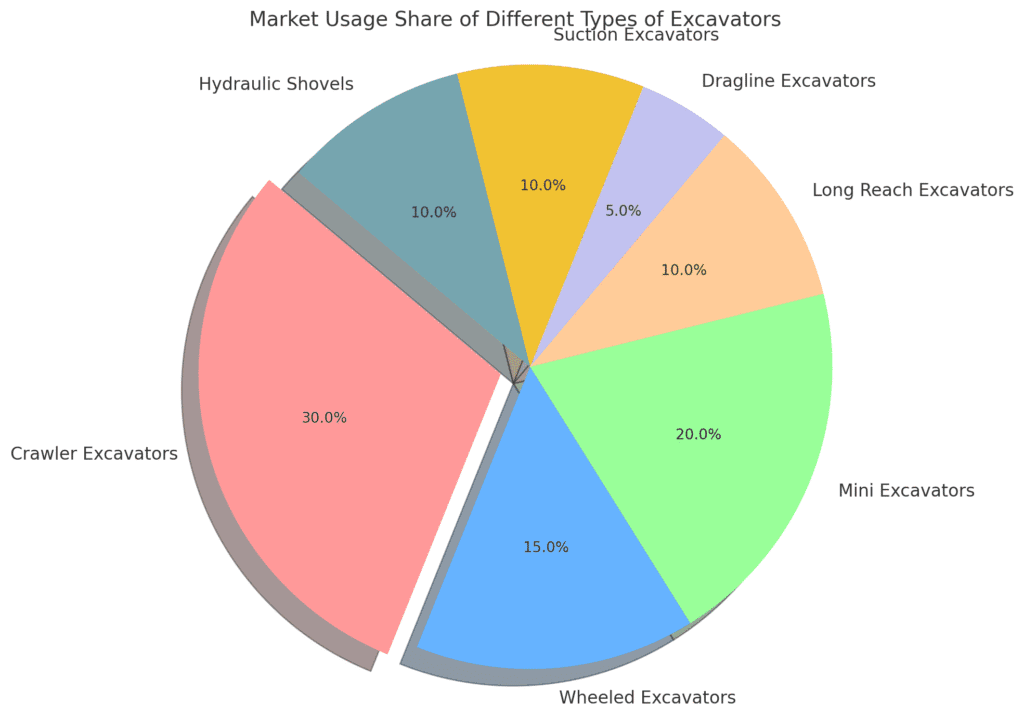Types of Excavators and Their Uses || Ultimate Guide for Construction Experts
Why Choosing the Right Excavator Matters
Every construction project—whether it’s a towering high-rise, a new highway, or a residential backyard revamp—relies on one indispensable machine: the excavator. But here’s the catch—not all excavators are created equal.
From navigating tight urban spaces to tearing through rocky terrain, different types of excavators are designed for specific tasks. Choosing the wrong one? That could mean inefficiency, higher costs, or even compromised safety.
In this post, we’ll walk you through the major types of excavators, their unique uses, and insider tips to help you pick the right machine for your job.
Understanding Excavators: The Power Behind Modern Construction
Excavators are powerful earthmoving machines used for digging, lifting, and transporting materials. Typically, they consist of a boom, stick, bucket, and cab mounted on either tracks or wheels.
But within that basic design lies a surprising amount of variation, each suited to particular job demands. Let’s break them down.
🚜 Main Types of Excavators and Their Uses
1. Crawler Excavators (Tracked Excavators)

Best For: Large-scale construction, uneven terrain, mining
Overview:
Crawler excavators are the most recognizable and commonly used type. Running on tracks rather than wheels, they offer superior stability and traction, especially on rough or muddy ground.
Key Features:
- High power output
- Enhanced traction on uneven surfaces
- Wide range of bucket sizes and attachments
Use Cases:
- Heavy-duty digging
- Demolition
- Trenching
- Mining and quarry operations
Industry Insight:
Their lower ground pressure makes them ideal for softer ground, minimizing damage to the surface—critical in environmental or preservation zones.
2. Wheeled Excavators

Best For: Urban construction, road maintenance, municipal work
Overview:
Wheeled excavators are similar in function to crawler models but are mounted on wheels, making them faster and more maneuverable on hard surfaces.
Key Features:
- Higher travel speed
- Easy transition between sites
- Less ground damage on paved surfaces
Use Cases:
- Road construction and repairs
- Municipal utility work
- Landscaping in developed areas
Pro Tip:
If your worksite is mostly paved or involves frequent relocations, a wheeled excavator can drastically cut transport costs and setup time.
3. Mini Excavators (Compact Excavators)

Best For: Residential projects, indoor/outdoor renovations, tight access sites
Overview:
Mini excavators offer the same core functions as standard models but are significantly smaller. They’re perfect for tight or delicate spaces where a full-size machine would be overkill.
Key Features:
- Compact design
- Lower noise and emissions
- Minimal site disturbance
Use Cases:
- Digging small trenches
- Installing irrigation systems
- Tree planting or stump removal
Personal Experience:
On a recent landscaping job, a mini excavator saved us hours of manual labor. Its agility allowed us to navigate narrow garden paths without damaging the surrounding plants.
4. Long Reach Excavators

Best For: River dredging, demolition at height, large-scale excavation
Overview:
Equipped with an extended arm and boom, long reach excavators can operate at distances that standard machines can’t. They’re ideal for tasks that require reach rather than brute force.
Key Features:
- Reach distances over 100 feet
- Attachments for cutting, crushing, or dredging
- Excellent visibility for remote work
Use Cases:
- Waterway maintenance
- Demolition of tall structures
- Slope stabilization
Did You Know?
According to Caterpillar, long reach models are also increasingly used in environmentally sensitive restoration projects due to their reduced ground impact.
5. Dragline Excavators

Best For: Large-scale mining, underwater excavation, civil engineering
Overview:
Massive and complex, dragline excavators use a hoist rope system to move a large bucket for deep digging. These machines are often seen in surface mining and large-scale civil projects.
Key Features:
- Massive digging capacity
- Operates from a distance
- Requires a flat working area
Use Cases:
- Strip mining
- Deep foundation excavation
- Port and harbor dredging
Limitation:
Due to their size and cost, draglines are usually used in long-term, high-budget projects. They’re not a viable option for short-term construction jobs.
6. Suction Excavators (Vacuum Excavators)

Best For: Underground utility work, sensitive excavation, debris removal
Overview:
Suction excavators use powerful vacuums to displace soil and materials. They’re extremely precise, making them ideal for areas with dense underground infrastructure.
Key Features:
- Reduced risk of utility damage
- High precision
- Minimal mess
Use Cases:
- Underground cable maintenance
- Archeological digs
- Tree root exposure
Game-Changer:
Cities like Berlin and Toronto now require vacuum excavators for utility work in populated areas to avoid damaging underground lines, per Forbes.
7. Hydraulic Shovel Excavators

Best For: Heavy mining operations, major excavation projects
Overview:
Also known as power shovels, these beasts are primarily used in the mining industry for moving large volumes of rock or soil. They operate using powerful hydraulic systems that allow for huge digging forces.
Key Features:
- Extremely powerful
- Capable of lifting several tons
- Short cycle times for efficient operation
Use Cases:
- Mineral extraction
- Open-pit mining
- Mega-scale construction

🧰 Comparison Table: Which Excavator is Right for You?
| Type | Best For | Terrain Type | Size | Notable Advantage |
|---|---|---|---|---|
| Crawler Excavator | Heavy-duty projects | Rough/Uneven | Large | Stability and power |
| Wheeled Excavator | Urban or road work | Paved/Hard | Medium | Speed and mobility |
| Mini Excavator | Tight spaces/residential | Mixed | Compact | Easy maneuvering |
| Long Reach Excavator | Dredging or tall demolition | Varied | Large | Extended range |
| Dragline Excavator | Large-scale mining | Flat/Terrain | Very Large | Deep digging capacity |
| Suction Excavator | Utility and sensitive digging | Urban | Small-Med | Precision and safety |
| Hydraulic Shovel | Mining and major excavation | Open pits | Very Large | Mass excavation |
🤔 How to Choose the Right Excavator for Your Project
Choosing from the many types of excavators isn’t just about size—it’s about functionality, terrain, and long-term project demands. Here are key factors to consider:
✔ Project Scope
Are you digging a shallow trench or moving mountains? Bigger isn’t always better—match the machine to the task.
✔ Terrain Conditions
Track-based models are better for muddy or uneven sites. Wheels are better for smooth, urban environments.
✔ Accessibility
Tight residential or urban worksites may require mini or suction excavators.
✔ Attachments Compatibility
Think beyond digging—attachments like augers, grapples, or hydraulic breakers can expand an excavator’s versatility.
✔ Fuel Efficiency & Environmental Impact
Modern machines with lower emissions and hybrid systems can help meet environmental regulations and reduce costs.
Final Thoughts: Excavators Are More Specialized Than Ever
With the construction and earthmoving industries evolving rapidly, modern excavators have become more specialized, tech-savvy, and tailored to exact site demands. Choosing the right type doesn’t just impact productivity—it determines the success of your entire project.
Whether you’re working on a city sewer line or developing an open-pit mine, understanding the types of excavators and their unique advantages empowers you to plan smarter, work safer, and deliver better results.
💬 What’s Next?
🚧 Have a favorite excavator type you rely on? Or a tip for maximizing efficiency on site? Share your thoughts in the comments below!
🔗 Explore our equipment rental services if you’re looking to get the right excavator for your next project.
